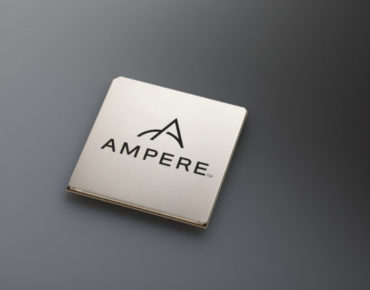Renée James, former Intel President, Heads New ARM-based Server Chip Venture

Source: Ampere
The “leadership journey” of Renée James, who held the highest rank of any woman in the history of Intel Corp., has emerged as CEO of a well-heeled, venture-backed company developing ARM-based chips, based on technology from Applied Micro Circuits, that will compete with Intel and others for a portion of the server chip market.
James’s new company, Ampere, located near Intel headquarters in Santa Clara, is funded by private equity firm The Carlyle Group, which James joined in 2016. When she resigned from Intel the previous year, concluding 28 years there, she held the position of president, considered the no. 2 spot to CEO Brian Krzanich.
Ampere processors are built for private and public clouds and deliver 64-bit Arm server chips with, according to the company, “high memory performance and substantially lower power and total cost of ownership.” Ampere processors offer a custom core Armv8-A 64-bit server operating at up to 3.3 GHz, 1TB of memory at a power envelope of 125 watts, the company said, adding that the processors are sampling now and will be in production in the second half of the year.
According to a story in the New York Times, in interviews James is not taking an adversarial stance toward her former company, stating that she respects Intel and that Ampere processors will handle specific cloud services workloads that are not in Intel’s bailiwick.
“I think they're the best in the world at what they do,” James told the Times. “I just don’t think they’re doing what comes next.”
“We have an opportunity with cloud computing to take a fresh approach with products that are built to address the new software ecosystem,” said James in a company announcement. “The workloads moving to the cloud require more memory, and at the same time, customers have stringent requirements for power, size and costs. The software that runs the cloud enables Ampere to design with a different point of view. The Ampere team’s approach and architecture meets the expectation on performance and power and gives customers the freedom to accelerate the delivery of the most memory-intensive applications and workloads such as AI, big data, storage and database in their next-generation data centers.”
When Paul Otellini ended his tenure at CEO of Intel in 2013, James was thought to be a candidate to take his role. As it turned out, James and Krzanich put forward a plan in which she would become president and he would be CEO, a proposal approved by Intel’s board of directors.
But she never lost sight of taking on a company’s top spot, and two years later, when she resigned from Intel, she stated in a memo sent to employees that “when Brian and I were appointed to our current roles, I knew then that being the leader of a company was something that I desired as part of my own leadership journey.”
The emergence of the new, 250-employee company from stealth mode comes at a time when the Meltdown and Spectre security design flaws in x86 processors has put Intel on the defensive.
On the other hand, Arm processors – available from companies such as Qualcomm and Cavium – have not yet made major inroads into the hyperscale cloud and data center server market, 98 percent of which is controlled by Intel.











